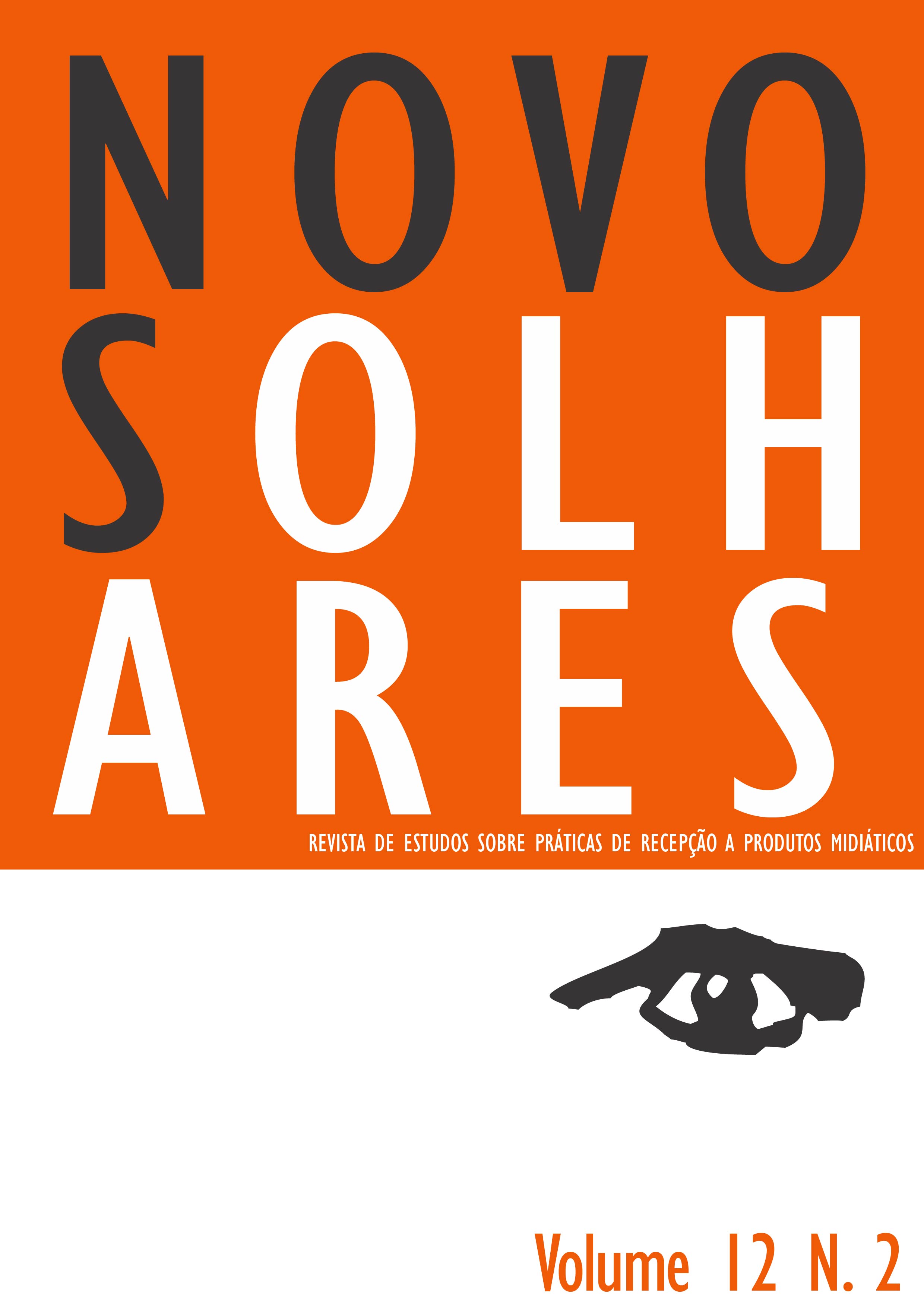“Seus ouvidos são um portal para outro mundo”: A nova imaginação documental do rádio e o domínio digital
DOI:
https://doi.org/10.11606/issn.2238-7714.no.2023.219918Downloads
Referências
Amos, D. (2002). Deborah Amos Topic with Rick Davis. The Transom Review, 2(2).
Astruc, A. (1968). The Birth of the New Avant-Garde: La Camera-Stylo”. In P. Graham (Ed.), The New Wave. Secker & Warburg.
Bannerman, R. L. (1986). Norman Corwin and Radio: the Golden Years. University of Alabama Press.
Barnouw, E. (1945). Radio Drama in Action: Twenty- Five Plays of a Changing World. Farrar & Rinehart.Blue, H. (2002). Words at War: World War II Era Radio Drama and the Post War Broadcasting Industry Blacklist. Scarecrow Press.
Braun P. L. (2001). Peter Leonhard Braun Presents the Classics [Gravação em CD]. Audio Arts Department, Australian Broadcasting Corporation
Braun, L. P. (1984, 7 de maio). Peter Leonard Braun Interviewed Collection. Personal collection, cassette, mini disc.
Braun, L. P. (1999). Discurso. International Features Conference.
Braun, L. P. (2002, 16 de dezembro). Braun Interview. Personal collection, cassette, mini disc.
Braun, L. P. (2004, 14 de junho). Braun Interview. Personal collection, cassette, mini disc.
Bridson, D. G. (1971). Prospero and Ariel: The Rise and Fall of Radio. Gollancz.Cook, C. (1970). Documenting Ourselves in radio feature The Mike at Large. BBC Radio 3, 1970s. Audio archive recording, British library.
Cottrell, L. & Gilliam L. (Produtores) (1948). Twenty-Ninth of January [Programa de rádio]. BBC.
Ehrlich, M. C. (2011). Radio Utopia. University of Illinois Press.
Farabet, R. (1972). Recréer Le Monde. L’Arc, (50).
Farabet, R. (1994). Farabet, R. (1994). L’avenir de la radio. Dossiers de l’audiovisuel, (53), 15-17.
Gire S. (2008). Arte Radio.Com ‘La Radio Est Un Art, Pas Seulement Un Transistor’ Entretien Avec Silvain Gire. In J. J. Cheval (Ed.), (Dossier) Mediamorphoses: “La Radio: Paroles Données, Paroles à Prendre”. Armand Colin.
Grierson, J. (1933). The Documentary Producer. Cinema Quarterly, 2(1), 1-288.
Grierson, J. (1966). The Documentary Idea. In F Hardy (Ed.), Grierson on Documentary (p. 250). Faber
Hilmes, M. (2011). Network Nations: A Transnational History of British and American Broadcasting. Routledge.
Hilmes, M; Loviglio, J. (Eds.). (2002). Radio Reader: Essays in the Cultural History of Radio. Routledge.
Keith, M. &Watson, M. A. (2009). Norman Corwin’s “One World Flight”: The Lost Journal of Radio’s Greatest Writer. Continuum Books.
Lawrence, J. (1947). A New Radio Form. Hollywood Quarterly, 2(3), 280-281.
Lewis, S. (2011, 1 de junho). About Born to Live with Jim Unrath). Transom. http://transom.org/?p=16646.
Madsen, V. (1994). Entrevista com Rene Farabet. Gravação de áudio.
Madsen, V. (2002, 29 de dezembro). Interview with Kaye Mortley. Unpublished audio recording..
Madsen, V. (2005). The Atelier de Creation Radiophonique: Propositions for an Expanded Radio Imaginary. In B. Berryman, D. Goodman, & S. Healey (Eds.), Radio in the World: Radio Conference (pp. 471-481). RMIT Publishing.
Madsen, V. (2005a). Radio and the Documentary Imagination: Thirty Years of Experiment, Innovation, and Revelation. The Radio Journal: International Studies in Broadcast and Audio Media, 3(3), 189-198.
Madsen, V. (2009). A radio d’auteur: The documentaire de creation of Kaye Mortley. SCAN 6, (3).
Madsen,V. (2011, 22 de abril). Entrevista com Silvain Gire (Diretor Arte Radio/Arte France).
Mark Thompson’s 2011 Radio Festival speech – full text. (2011, 1 de novembro). The Guardian. https://bit.ly/48R09N4
Paget, D. (1990). True Stories?: Documentary Drama on Radio, Screen, and Stage. Manchester University Press.
Peach, R. (1977, 28 de setembro). Other People’s Radio. ABC Radio Two Programmes. Australian Broadcasting Commission.
Reality and Fiction in Radio. In R. Farabet (Ed.), Bref eloge du coup de tonnerre et du bruit d’ailes (pp. 73-77). Phonurgia Nova.
Reynolds, G. (2012, 3 de abril). Radio 4’s ‘the Listening Project’ Turns Conversations into Art. The Daily Telegraph. Rodger, I. (1982). Radio Drama. Macmillan.
Scannell, P. (1996). Radio Documentary: From Profession to Apparatus. In M. Angina (Ed.), The Quest for Radio Quality: The Documentary (pp. 33-40). Prix Italia.
Schwartz, T. (1956). Sons De Ma Ville Documentaire Sonore Par Tony Schwartz, Technique De L’enregistrement. Prix Italia Catalogue.
Shapley, O. & Hart, C. (1996). Broadcasting a Life: The Autobiography of Olive Shapley. Scarlet.Sieveking, L. (1934). The Stuff of Radio (pp. 28-29). Cassell.
Terkel, S. (2001, 25 julho). Born to Live. Transom. https://bit.ly/3HfMzqM
The Kitchen Sisters. (1999, 26 de fevereiro). 30,000 Recordings Later. PRX. https://beta.prx.org/stories/26842-tony-schwartz-30-000-recordings-later.
Trappel, J. & McQuail, D. (2011). Media in Europe Today. Intellect.
Walker, R. (2011, 7 de abril). On ‘Radiolab, the Sound of Science’. New York Times. https://nyti.ms/3RZaZtx.
Weibel, T. (2012, 25 de janeiro). Nutshell: Sue Schardt. Think tank Leipzig. https://bit.ly/3O3EIQQ
Wertheimer, L. (1995). Listening to America: Twenty-Five Years in the Life of a Nation. Houghton Mifflin.
Downloads
Publicado
Edição
Seção
Licença
Copyright (c) 2023 Virginia Madsen

Este trabalho está licenciado sob uma licença Creative Commons Attribution-NonCommercial-NoDerivatives 4.0 International License.
Proposta de Aviso de Direito Autoral Creative Commons
1. Proposta de Política para Periódicos de Acesso Livre
Autores que publicam nesta revista concordam com os seguintes termos:
- Autores mantém os direitos autorais e concedem à revista o direito de primeira publicação, com o trabalho simultaneamente licenciado sob a Licença Creative Commons Attribution CC Attribution-NonCommercial-NoDerivatives 4.0, que permite o compartilhamento do trabalho com reconhecimento da autoria e publicação inicial nesta revista.
- Autores têm autorização para assumir contratos adicionais separadamente, para distribuição não-exclusiva da versão do trabalho publicada nesta revista (ex.: publicar em repositório institucional ou como capítulo de livro), com reconhecimento de autoria e publicação inicial nesta revista.
- Autores têm permissão e são estimulados a publicar e distribuir seu trabalho online (ex.: em repositórios institucionais ou na sua página pessoal) a qualquer ponto antes ou durante o processo editorial, já que isso pode gerar alterações produtivas, bem como aumentar o impacto e a citação do trabalho publicado.



